Addressing Antisemitism – a Personal Note, and the Importance of Inclusion
As usual in December, there’s a lot to report on about interfaith family inclusion. This year, it’s important to start with how that relates to antisemitism.
The month began with a report that Senator Cory Booker had married a Jewish woman. At the time, I commented on the Center’s Facebook page that I was glad to read that Booker’s friend Rabbi Matthew Gewirtz of Temple B’nai Jeshurun in Short Hills, New Jersey participated at the wedding, with Booker’s pastor.
Then there was a report that Booker lit Hanukkah candles for the first time at home – on the same day as the horrible antisemitic attack in Australia. He said, “My parents sort of told my brother and I about the ancient evil of antisemitism and the urgency to fight against it. But now that I’m married to a Jewish woman and we’ll – God willing, b’ezrat Hashem, have Jewish children, it’s taken on an even deeper, more personal sense of urgency.”
I’ve often felt that one positive by-product of interfaith marriage is that it can result in more allies of the Jewish people, and of Israel. I don’t just mean the partner from a different faith background – I mean all of their relatives, too. People who are not Jewish and might have no reason to think one way or another about Jews now, after their loved one is in an interfaith relationship, have a reason to be positive and supportive.
In that vein, I was very touched and moved this week when my son-in-law’s mother emailed me to say, “I have been struggling to find the words to let you know our abhorrence of the Australia attack. It is frightening what is happening, not just here but in the world, with the appearance of antisemitism.” My first thought was that it would not be irrational for her to regret that our mutual beloved grandsons are at risk of hate and even violence because they are Jewish. But that wasn’t her response. Her response was, “I can only have hope and do what I can.”
Our advocacy is motivated by the belief that we will have more people Jewishly engaged or supportive of their relatives’ Jewish engagement, the more we help make interfaith families, especially the partners from different faith backgrounds, feel a sense of belonging in Jewish communities. Addressing rising antisemitism is one reason why that advocacy is so important – something that Pulitzer Prize winning author David Shribman pointed out in “Welcoming the Intermarried: A Challenge and An Opportunity.”
Shribman writes that addressing the findings in our paper, What Recent Studies Reveal About Interfaith Family Inclusion, that “those in interfaith relationships don’t feel nearly as strong a connection to the Jewish people, or to their local Jewish communities, as those in relationships of two Jews” is “vital to the survival of Judaism in the United States, and to the preservation of Jewish values, especially at a time of rising antisemitism and divisions within the Jewish community over Israel and its response to” October 7.
Conservative News
It is fair to say that the Conservative movement is still struggling with how much of a sense of belonging it will foster among interfaith families and partners from different faith backgrounds. There is a lot that is positive in the movement’s just-released Joint Intermarriage Working Group Report. But the question of wedding officiation overshadows the progress.
The authors of the report “deeply apologize” for their historical stance disapproving of interfaith marriage. They “celebrate the meaningful contributions of Jewish-adjacent partners and spouses, and the children of such unions, in the work of creating and sustaining Conservative/Masorti Jewish households.” They want to “welcome, bless, and affirm intermarrying couples” (albeit only those “who are committed to solely Jewish practice.” They “recognize the delicate balance between ensuring that non-Jewish partners are aware of the option to convert while avoiding undue pressure.” They want to “ensure an appropriate path to formal affirmation for those who already identify as part of the Jewish people.” The “primary goal” of the process of finding a life partner is not endogamy, but “to empower the individual to articulate for themselves the kind of Jewish life they seek to lead. If they seek a partner, their goal would be to find a partner aligned with that vision of Jewish life.”
Much of this is quite remarkable coming from the movement. I hope all of their next efforts help them reach their goal to “engage intermarried couples more fully.”
But the elephant in the room remains whether and how Conservative rabbis will be allowed to participate in weddings of interfaith couples. Articles in eJP and JTA focus on the division in the movement over that issue.
It seems clear from the report that some members of the working group want the movement to allow more participation. The report itself talks about a “halakhah that recognizes that boundaries shift depending on circumstances and are not always a reason to say ‘no’; halakhah can also provide an opportunity to be inclusive and say ‘yes.’” They talk about having “ritual options to welcome, bless, and affirm couples with one Jewish partner and one partner who, while not formally Jewish, is firmly committed to co-creating an exclusively Jewish household. This includes opportunities to bless the couple, independent of the traditionally prescribed Jewish wedding ceremony, in the synagogue or elsewhere, before, on the day of, and after the wedding date.”
Ultimately, it’s going to be up to the Committee on Jewish Law and Standards, who the report asks to provide further clarification because “the standard of religious practice [which bans wedding participation] was created in part as a statement of disapproval of certain relationships and that we are shifting away from messages of disapproval.” The report asks the CJLS to “clarify whether other paradigms of marriage besides kiddushin that the CJLS has already developed and approved [presumably referring to gay and lesbian unions] might apply in the case of the union of a Jew with someone who is of another background.” In striking evidence of the split in the movement on this issue, the report notes that “Working group members asked that it be reported that there was not unanimity on this issue.”
Keren McGinity is quoted in the JTA article saying that fears of a “mass defection” if the movement were to allow its rabbis to officiate “have long been overstated.” She aptly pointed out that “avoiding change … also carries risks, pointing to the 2020 Pew study showing that fewer than half of Jews raised Conservative still identify with the movement. That is hugely concerning.”
Indeed it should be.
Three Thought Leaders with Important Statements
Rabbi Angela Buchdahl is on a tour this month speaking about her wonderful book, The Heart of a Stranger, which I have read and hope to write about in more detail later. I was struck by this comment in an interview in San Francisco:
“You can be a part of a family by just being born into it … and you can also become family through what’s called a covenantal relationship,” such as between spouses, Buchdahl said. “We don’t share any blood, but we made a covenantal promise, and that made us into a family. Every one of us who wants to be a part of the Jewish community [is] in a covenantal relationship with our people and with God. What if we were to imagine that everyone who wants to be a part of that covenant is 100% fully Jewish?”
This sounds an awful lot like what the Center has consistently advocated for: that everyone from a different faith background who wants to be part of the Jewish community should be thought of as and treated equally with their Jewish partner.
Jay Sanderson, president of American Jewish University, explicitly refers to the importance of including interfaith families in “The Jewish Future Is Calling.” AJU’s goal is “to reimagine and rebuild the foundation of Jewish life in North America.”
Sanderson says AJU “transformed Jewish learning when it launched the first intensive class for interfaith couples and individuals exploring conversion, helping countless people build Jewish homes and families.” They are now expanding to create “more welcoming pathways for anyone Jewish, Jew-ish and Jew-curious and nurturing the earliest steps of every Jewish journey.” They are offering in-person classes in multiple cities, to connect “interfaith couples and individuals learning about Judaism to each other so they can build peer groups that continue beyond the class.”
Sanderson says AJU is “building a Jewish future where Jews, no matter where they live or how they self-define, can find a place inside a reimagined Jewish community, one where every voice has value and everyone is contributing to the Jewish future.” This all sounds very promising, if a bit generalized; it’s not clear whether the voices of partners from different faith backgrounds would have equal voice and be allowed to contribute equally.
Yehuda Kurtzer, president of the Shalom Hartman Institute, wrote a brilliant essay, mostly about divisions between the Left and the Right over Israel: Our Fragile Tents: Community, Consent, and Care. One response to the 1990 National Jewish Population Study (with its finding of a high rate of interfaith marriage) was to “cultivate attachment through radically open approaches to welcoming people in.” This “found expression in the shift of liberal Jewish leaders who first tried to fight against intermarriage, then accepted it as inevitable, then welcomed interfaith families, and eventually worked to break down the barrier between Jews and the “Jewish-adjacent” among their stakeholders.”
“Opening the flaps of the Big Tent promised new possibilities for the Jewish community to expand and for all the moral gains that come with greater inclusion.”
Kurtzer laments that since October 7, “the primary emphasis of Jewish leaders has moved from widening the Big Tent to narrowing it, and from building Jewish community to trying to protect it.” “The kind of fear that has taken root in the Jewish community – of danger on the outside, of threats already on the inside – destroys any desire or incentive to think expansively about our networks of belonging.”
To reverse this trend, Kurtzer says “[W]e must be clearer about when and how we set boundaries in Jewish communities, so that our safety instincts do not harm our efforts to be welcoming more than they need to.” He says it is fair for institutions to cease partnering with other institutions over major values disagreements, but “it is a terrible side effect when individuals who affiliate with the rejected institution … are treated by members of the first institution as heretics.” Although he’s talking about divisions over Israel here, this made me think of how Orthodox leaders tend to be so disparaging of liberal Jews. They could maintain boundaries where halachic status matters (like marriage), while uniting with liberal Jews on other causes common to the larger Jewish community. Kurtzer doesn’t address this specifically; it would be interesting if he did.
Kurtzer makes an interesting observation about what belonging means, talking about being
“uplifted by an experience of communal singing and prayer, one that makes you feel connected to everyone in the room, or [experiencing] the warm hug of strangers caring for your needs in your own home while you are sitting shiva…. We have core anthropological, psychological, spiritual, and even biological needs for community in ways that are hard to define – though most of us can tell when a community ‘feels right’ and when it is time to move to a different one.”
It would be interesting to know what Kurtzer thinks is needed to cultivate those kinds of feelings of belonging in partners from different faith backgrounds.
December Holidays
Jessica Grose’s “What My Children Taught Me About Interfaith Tradition” is a very beautiful essay in her NY Times newsletter. She describes realizing that her family had “integrated” their interfaith household – she’s Jewish, she doesn’t identify her husband’s faith background, but it included Christmas: “On Sunday night, my family decorated our Christmas tree … Earlier in the day, my older daughter was practicing her Torah portion, and my younger daughter was working on a school slide show about the menorah we use every year …”
Looking back, she had wanted her children “to know what it meant to be Jewish, but … wanted to impart that in a way that didn’t feel oppressive or a rejection of my husband’s faith.” She hadn’t expected, as her children matured, that what she describes as “blending faiths” would become easier: “Our older daughter chose to start attending Hebrew school when she was 10, and has become part of a Jewish community that is welcoming to interfaith families. Her sister is eager to follow in her footsteps.” They also enjoy Christmas holiday rituals and traditions.
It’s interesting that she describes this as “blending faiths” – they clearly are very Jewishly engaged as a family. But she concludes with a key observation – that her daughters “don’t have to abandon any part of themselves for our family to feel whole.”
In a similar vein, in a nice article in the Boston Globe, Meredith Goldstein says, “There is no Christmas tree in the world that can erase who I am and the fact that I was raised by Ashkenazi Jews who studied music in New York City.” I liked this: “I believe that when people of different backgrounds get together and share a home, all of these traditions can and should coexist so everyone feels seen.”
Our friend Rabbi Melinda Mersack of Cleveland’s jHUB is featured in “Observing different holidays can be done, rabbis say,” emphasizing the importance of couples communicating what’s important to them about their holiday celebrations. Rabbi Matt Cohen is also featured, and I love what he says:
“In interfaith families, it’s important everyone feels equally a part of our community. We reach people through education, by teaching someone who is not Jewish, who is taking part in celebrating a holiday they haven’t celebrated in their upbringing, that they are just as much a part of our community.”
In other December holiday news:
- An essay in Tablet, “Beyond the December Dilemma” by Abigail Pogrebin, gives voice to adult children of interfaith parents. I’d say the kids turned out all right.
- The Forward’ Mira Fox pans Oy to the World, this year’s Hallmark Hanukkah movie.
- Samira Mehta offers “Merry Jewish Christmas: How Chinese food and the movies became a time-honored tradition for American Jews.”
- Susan Katz Miller is quoted in an article on holiday books for interfaith kids.
- People magazine offers “Happy Chrismukkah! 17 Celebrity Families Who Celebrate Both Christmas and Hanukkah”
Missed Opportunities
Two essays responding to the ATRA study on the rabbinate alluded to, but could have said more about, interfaith relationships. In “We have an opportunity to revamp liberal rabbinic education and Jewish lay leadership,” Rabbi Rebecca Sirbu notes that many contemporary Jews and their families “have non-Jewish members,” without saying more about the implications for rabbinic education. In “Rabbinical training doesn’t have a pipeline problem – we have a preparation problem, Rabbi Jesse Paikin says that “Genuine pluralism demands more porous boundaries than many legacy institutions prefer,” again without saying more about what those boundaries might be with respect to interfaith families.
Similarly, in an eJP interview about a new study by about disability inclusion, Matan’s terrific executive director Meredith Polsky says, “Disability spans every aspect of Jewish community life,” giving two examples: “If you work with individuals who identify as LGBTQ, there’s going to be people with disabilities. If you work with Jews who are multiracial, there’s going to be people with disabilities.” It’s unfortunate she didn’t include interfaith families among these other historically disadvantaged groups.
Pew Data
Some interesting new data from Pew considers why people keep their religion or leave. Jews are pretty high up (76%) in keeping their childhood faith (ranked third, after Hindus (82%) and Muslims (77%), but before those with no religion (73%), Protestants (70%), Catholics (57%), Latter-Day Saints (54%) and Buddhists (45%).
What struck me was how important a sense of community was as a reason why lifelong Jews remain are Jewish compared to other groups: Among U.S. adults who were raised Jewish and still identify as Jewish by religion, 57% cite liking the sense of community (compared to 38% of Catholics and 46% of Protestants).
Among those Jews, 60% say liking the traditions is an extremely or very important reason they are Jewish (compared to 46% of Catholics and 33% of Protestants); about half of Jews (53%) say they are Jewish because it’s their family religion (compared to 44% of Catholics and 30% of Protestants).
In Other News
- I thought it was extreme and unnecessary for Zohran Mamdani’s aide to have to resign because she made antisemitic posts on social media when she was 19 – given that now she’s married to a Jew and raising their children as Jews! This seemed like a pretty good case for redemption to me.
- Rabbi Barbara Aiello offers “The Challenges of Jewish Christian Grandparenting.”
- A large synagogue’s executive director explains how he says “shalom y’all” to be inclusive.
Please Support the Center
We found spiritual support for our advocacy in an unusual place this month: the new bishop of the Church of Norway, whose focus is inclusion, not conversion; her calling has been to “swing open the doors … as wide as possible.”
We rarely ask for another kind of support – financial – but in the spirit of the season, with year-end rapidly approaching, we would be grateful for it. If you find our newsletter useful, if you value advocacy for inclusion of interfaith families – please make a contribution, in any amount, at www.cfrij.com/donate. Thank you!


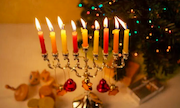 Exactly twenty years ago, in December 2004, I wrote “
Exactly twenty years ago, in December 2004, I wrote “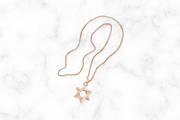 Twenty years ago, there was a lot of hostility toward interfaith marriage from the intellectual leadership of the Jewish community. That was the year a study
Twenty years ago, there was a lot of hostility toward interfaith marriage from the intellectual leadership of the Jewish community. That was the year a study 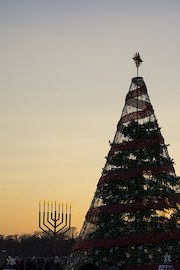 I rarely agree with Jonathan Tobin, who in the past has been a harsh critic of interfaith marriage, So I was very pleasantly surprised that he
I rarely agree with Jonathan Tobin, who in the past has been a harsh critic of interfaith marriage, So I was very pleasantly surprised that he 
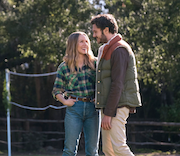 The buzz about “Nobody Wants This” has quieted. My
The buzz about “Nobody Wants This” has quieted. My 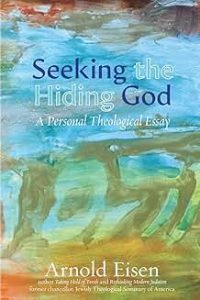 Eisen. Coincidentally, Andy Silow-Carrol
Eisen. Coincidentally, Andy Silow-Carrol  Conservative Rabbi Ari Kaiman, reiterating the view that it is inappropriate for a partner from a different faith background to say the Torah blessings, says:
Conservative Rabbi Ari Kaiman, reiterating the view that it is inappropriate for a partner from a different faith background to say the Torah blessings, says: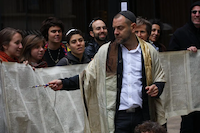 “Sabbath Queen.” At the most inclusive end of the spectrum, “Sabbath Queen,” a new film about Rabbi Amichai Lau-Lavie, is getting a lot of attention. Lau-Lavie, founder of LabShul, was ordained at JTS, but left the Conservative movement to officiate at weddings of interfaith couples. A
“Sabbath Queen.” At the most inclusive end of the spectrum, “Sabbath Queen,” a new film about Rabbi Amichai Lau-Lavie, is getting a lot of attention. Lau-Lavie, founder of LabShul, was ordained at JTS, but left the Conservative movement to officiate at weddings of interfaith couples. A 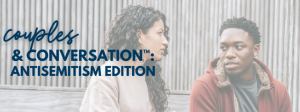 18Doors’ board chair, Laurie Beijen, and chief program officer, Adam Pollack,
18Doors’ board chair, Laurie Beijen, and chief program officer, Adam Pollack,  Jack Wertheimer addresses the impact of October 7 and resurgent antisemitism on American Jews in “
Jack Wertheimer addresses the impact of October 7 and resurgent antisemitism on American Jews in “ Hey Alma’s advice columnist tackles
Hey Alma’s advice columnist tackles